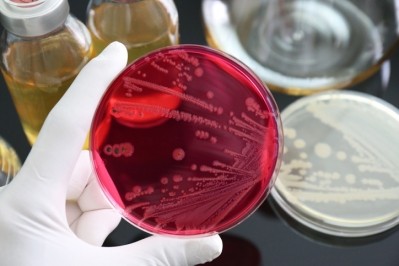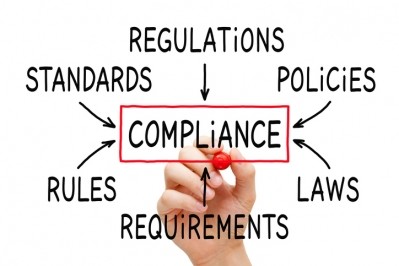Special Edition: IPPE Reports
FSMA-related feed testing project seeks more volunteers

We caught up with Richard Sellers, senior vice president of public policy and education with the American Feed Industry Association (AFIA) and Steven Ricke, lead researcher and professor at the University of Arkansas, at the International Production and Processing Expo (IPPE) to hear more about a research project seeking to establish the level of salmonella risk from strains found in feed.
The salmonella tracking project is being funded by the Institute for Feed Education & Research (IFEEDER) along with several partners including the AFIA, US Soybean Board, National Pork Board, National Renders Association, Poultry Protein and Fat Council and US Poultry and Egg Association, said Sellers.
“The whole goal here is the Food Safety and Modernization Act (FSMA) says you must address all the hazards that are known or reasonably foreseeable,” said Sellers. “You look at the universe of things and there are not good data and surveys on salmonella in feed, and they’re old – the few that there are.”
However, the research project has been facing some challenges in getting companies to supply feed samples for the project, he said.
Project overview
The US Food and Drug Administration (FDA) has changed how it approaches salmonella in recent years, said Sellers.
“Instead of all salmonella’s bad in feed, there are these eight serotypes and only for animal health, they’re not concerned about human health, and so we focused on these,” he said.
However, there is still a need to test for the eight strains considered important for animal health, he said. It is anticipated, based on previous examinations, that of feed samples examined about 5-10% could test positive for some form of salmonella – not necessarily one of the eight being sought.
If a feed sample tests positive then an analysis would be completed to determine the serovar, or strain, of the salmonella, said Ricke. The entire genome of the serotype also might be sequenced to be clear on the type found.
“You want to be fairly certain of who you’ve got once you isolate them,” he said.
However, the specific strains of salmonella being sought are considered to rarely exist in feed, said Sellers. “We’re told by experts, by microbiologists, it’s very rare to nonexistent,” he added.
“We’re doing it to demonstrate under the Food Safety Modernization Act that salmonella enterica, and those eight serovars are not known or reasonably foreseeable, which is the standard in the law, ” he said. “They have at some point in time been reported in animals, but they’ve not been reported in feed except in contamination circumstances where there was some kind of on-farm contamination from the animals.”
The protocol of the research project has been vetted by the FDA as part of the industry’s work to address FSMA standards, he added.
Results are set to be reported in aggregate to preserve company anonymity, he said. Companies that take part also will be provided group data but not individual results.
“So you say I found one of these – what does that do to the whole idea that it’s not known, or reasonably foreseeable, where you got one out of 500?” Sellers asked. “That’s for the researchers to make a qualified determination.”
However, the expectation continues to be that very few, if any, of the samples tested, would carry one of the concerning strains, he said.
“We’re hoping to see that Dr. Ricke, or the journal that he puts this study into, says, ‘Yes, it looks, like based upon the geography, and based on the number of species, and based the seasons you’ve sampled it’s not known or reasonably foreseeable within certain probable certitude,’” said Sellers.
Getting feed companies involved
The timeline is to finish the sampling project this summer, but it has been hard to get enough companies to agree to take part and there have been some delays, said Sellers.
“Our problem has been convincing companies,” he said. “We’re up to about 100, and we’d like 250 to take two samples of major species [feeds] in the winter and the summer.”
When all samples are collected there will be a geographic breakdown to understand how many species and areas are represented, he said. A goal is to have the largest sampling across the US that can be collected.
“We’re not going to talk about who the companies are, and we’re not going to talk about where the facility is,” he added.
The group also is hoping to gather some additional details like information on pelleting temperature, and if there are feed additives like antibiotics present, said Sellers. “My past experience on getting more variables is problematic,” he added.
“The more we can know about the feed itself it will help us in terms of figuring out OK if we do see salmonella is there some kind of pattern to it?” added Ricke. “That helps down the road when you can say, 'If you’ve got these things going on the likelihood maybe is higher.'”















